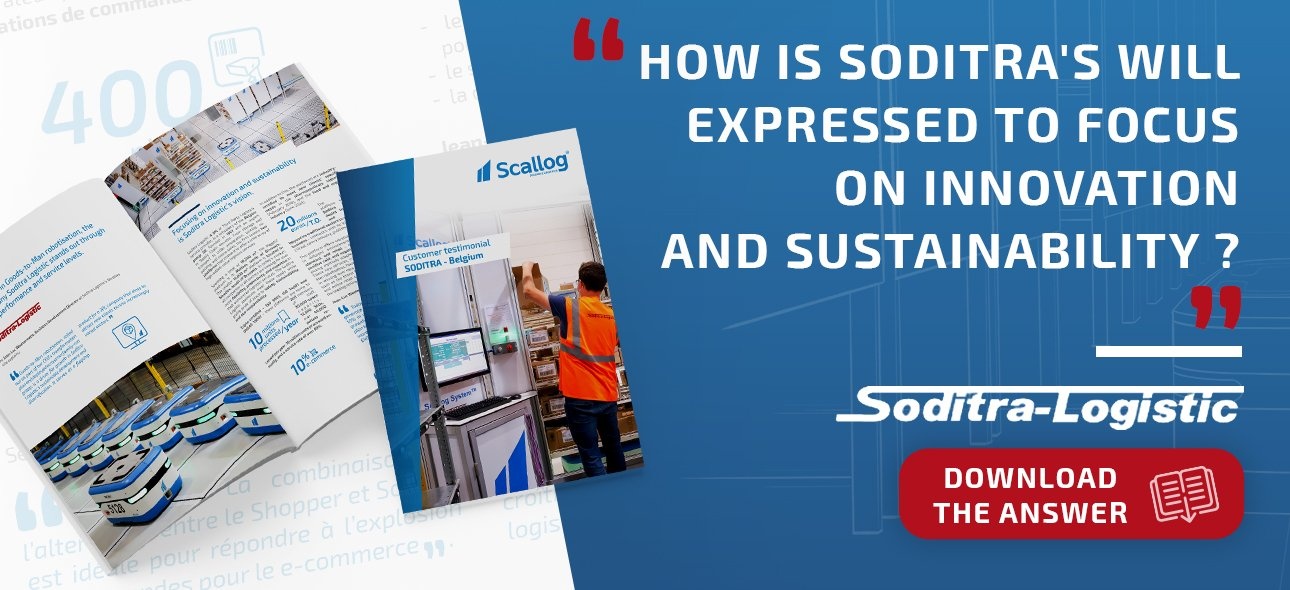Workplace Health: Ergonomics, safety and health enhanced by logistics robots
Expert Article by Olivier Rochet, CEO of Scallog

Nanterre le 19 may 2021 –
Fluctuating flow rates and the faster pace of work in warehouses can be a source of stress for workers, who often suffer from musculoskeletal disorders. Reducing the need for movement and repetitive gestures is becoming essential to preserving the health of the men and women who prepare orders. Goods-to-person robotics offers a way to combine ergonomics and safety with productivity.
Today’s logistics professionals must cope with the surge in e-commerce and the focus on omnichannel retailing while addressing emerging needs among both professional and private consumers. Warehouses become increasingly functional and sprawling, which means unpredictable peaks in activity and an unprecedented increase in retail order picking. Warehouse operations become very time-consuming and they require resources, handling and travel through the warehouse.
In order to coordinate and absorb those retail flows as effectively as possible to meet demand, logistics engineers must become more efficient and productive, beyond trading off their resources as an adjustment variable. Automation, and specifically goods-to-person robotics, is a crucial element to ensure efficient logistics without compromising on the operator’s safety and well-being. Improved working conditions in the warehouse that eliminate repetitive handling and movements will inevitably lead to lower turnover, reduced absenteeism and better productivity!
Goods-to-person robotics for reducing operator stress and exertion
Repetitive gestures, the need to cover several kilometres and to handle heavy loads can all lead to fatigue, impaired efficiency and musculoskeletal disorders, the primary cause of occupational disease in France. By preventing and reducing those ills, firms can address both human and financial concerns for improved logistics performance.
Goods-to-person robotics, in which goods come to people, significantly reduces stress and exertion for operators in three areas: the number of kilometres travelled, repetitive movements and the need to carry heavy loads.
With a goods-to-person robotics solution in place, operators conduct order picking from an ergonomic workstation – eliminating the time spent walking more than 15 kilometres per day on average, the need to pick up anywhere from 1 to 8 tonnes of weight a day, and improper handling. Roaming the warehouse looking for products not only results in lost productivity and stress, it can account for up to 70% of idle time in an operator’s day! Eliminating those tasks helps to improve logistics efficiency.
Goods-to-person robotics for improving personnel safety
In the face of the Covid pandemic, warehouses have had to implement new safety rules to maintain physical distancing and limit movement and prolonged contact among operators. On top of those requirements for protecting health, it’s important to safeguard the physical well-being of operators, regardless of the work environment and the products being handled.
In addition to eliminating worker traffic through the warehouse, which can lead to collisions and falls, goods-to-person robotics guarantees a safe distance between the operator and the most hazardous products. The most sensitive products are tracked and stored on shelves in an enclosed area; operators handle those products with the necessary know-how. Errors and improper handling are a thing of the past among both experienced and temporary operators, who are guided through every step.
Goods-to-person robotics for unmatched workstation ergonomics
Goods-to-person robotics not only optimizes retail flows and improves order-picking efficiency; it also guarantees unmatched workstation ergonomics compared to traditional equipment.
The goods-to-person workstation occupies a smaller space and can be customized to ensure workers use the best posture when picking orders; the height of the shelves is configurable for easy access and handling, as are the container dimensions. Everything about the workstation has been designed to reduce repetitive movements and operator fatigue.
Moreover, it allows for rotating teams. Goods-to-person robotics provides for employee versatility: workers can be trained in a few hours and can work on a variety of tasks.
Scallog is constantly collaborating with employees to identify the optimal workstation configuration: thanks to a 3D environment, they can see themselves as they make virtual movements. Like exoskeletons, goods-to-person robotics represents one of the best technological solutions for reducing musculoskeletal disorders and arduous working conditions in the warehouse without compromising on productivity, which increases an average of 40%!
In conclusion, goods-to-person robotics does more than simply reduce worker stress and improve safety; ideally, it can be one component of a strategy by logistics specialists to address Workplace Quality of Life for warehouse operators. Improving working conditions and tracking day-to-day activity more effectively promotes greater employee engagement and motivation on behalf of logistics performance. In that sense, goods-to-person robotics helps to strike a better balance between faster production rates and employee well-being to ensure sensible warehouse productivity!







